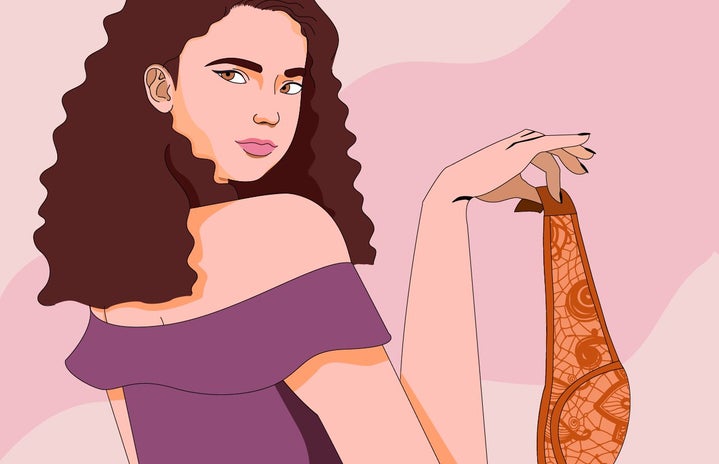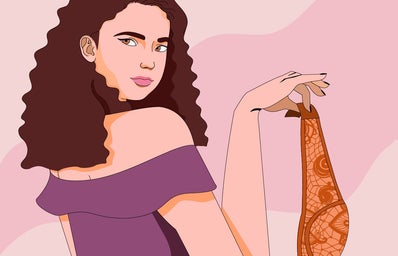Bras are one of the most frustrating features of being a woman. They’re expensive, confusing, and usually uncomfortable. The history of bras, on the other hand, is pretty straight forward. The bras considered to be ‘trendy’ over the years link to what body type was seen as ‘ideal’ at a particular moment in history, showing that there is a direct connection between the ‘ideal’ body and the bra industry. This means that the bra industry has been making money for generations by creating idealistic body types to be achieved by wearing their bras, then switching them out every couple of years to sell more.
History
Turns out, bras have a long history! Bandeaus appear in wall paintings of women playing sports from the 1300s. Before this we have to assume that women didn’t wear anything underneath their clothing. The first major development took place in early 16th century France as corsets were introduced. These were extremely tight waist trainers and attempted to create the ‘perfect’ female figure (they pushed up the boobs). Then came girdles, which extended the corset down to the waist (we still have the lower half of these today). In the late 19th century the corset was split in half, creating the classic bra. Corsets were ditched by the 1920s and small boobs became the ideal, and bandeaus became extremely popular again as they squashed the chest (fitting the ideal look).
Cup sizes started emerging in the 1930s, and so large-scale production was a much more efficient way to produce large amounts of bras in different styles and sizes. With more sizes being introduced, and the popularity of bigger chested stars such as Marilyn Monroe, larger breasts were becoming more ‘idealistic’. This meant that push up bras started to come into trend. Bras slowly started becoming more diverse, with lace and sports bras hitting the shelves.
Then came Victoria’s Secret in the 1970s. Victoria’s Secret started upping the prices of underwear and over-sexualising bras and the lingerie industry, putting a lot of department stores’ bra departments out of business. Until relatively recently, Victoria’s Secret had a massive impact on the fashion world. However, their lack of diversity and body inclusivity has caused rifts within the company, and the general public have been losing interest as a result.
Today
Bras changed based on the ideal body type for a woman at the time. Whether it was the tiny waist paired with the bigger bust or completely flat chests, whatever was trendy suited how the industry wanted women to look. In today’s world, things have slightly shifted. We have such a wide range of bras to choose from. However, idealistic beauty standards still exist and are produced through the lingerie industry.
Recent movements aim to allow women to feel comfortable, free, and confident in going braless. However, the lingerie industry fights back against this, insisting that bras are necessary for women to feel confident. Whether it’s playing sports, going to work, or partying, the industry insists that women need to wear bras to feel comfortable and confident. Essentially: who cares if women are uncomfortable? As long as they’re buying our product!
Let’s set it straight: women don’t have to wear bras! If you feel comfortable and confident going braless, go for it! If you feel that you need a bra to feel comfortable and confident, do it! The problem lies when men and the industry suggest that wearing a bra is THE only way to feel confident or accepted. Newsflash: do whatever you feel is best for your body and your health. x


